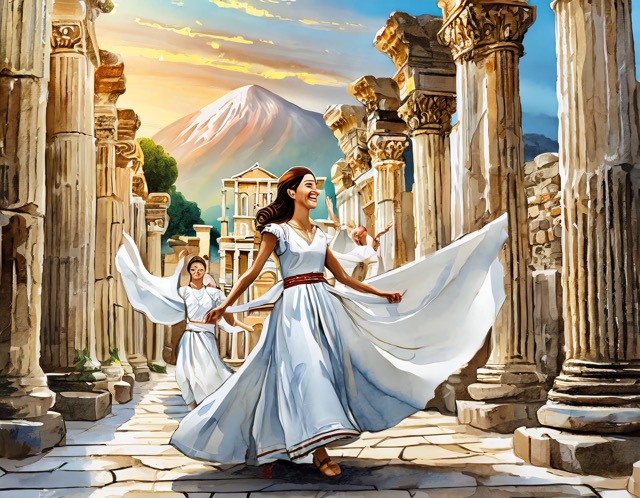- Home
- Dance
Dance

Dance
Ephesus, as one of the most important cultural and religious centers of the ancient Greek and Roman worlds, was home to the captivating world of dance, an integral part of religious ceremonies, festivals, theatrical performances, and social life. In Ephesus, dance was more than just a form of entertainment; it was a means of expression imbued with religious and cultural significance. Dances were performed during rituals and ceremonies held in honor of gods and goddesses, with the cult of Artemis in Ephesus being particularly known for its association with dance.
Dancers, accompanied by lyres, auloi (double-reed wind instruments), and other musical instruments, performed both choreographed and improvised movements. The use of costumes and masks during performances not only added aesthetic value but also served the function of narrating mythological stories and legends.
Although there are no detailed written records about the specific dances performed in ancient Ephesus, significant insights into the styles and contexts of these dances can be gleaned from artworks and literary references. Vase paintings, frescoes, and sculptures provide valuable clues about the dance practices of the ancient world and illuminate the role of dance as a vibrant part of social and religious life in Ephesus.
